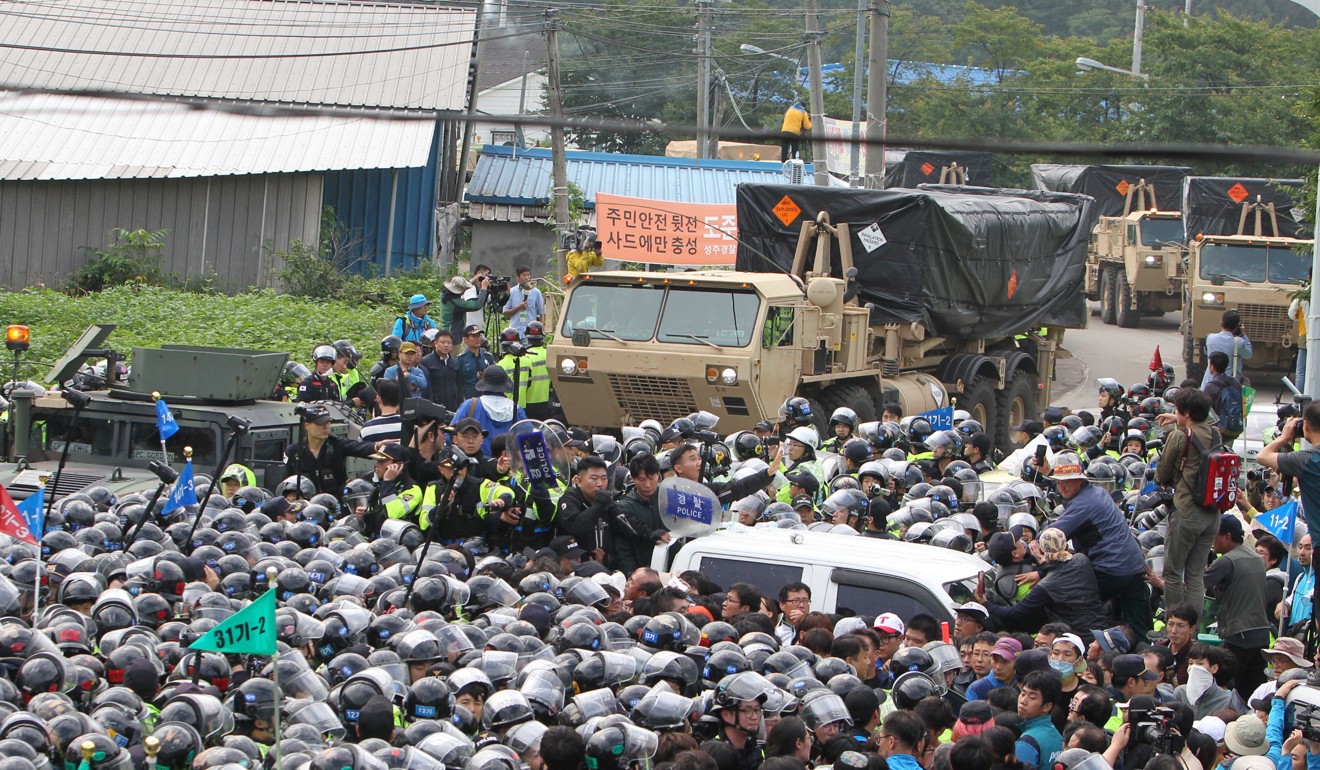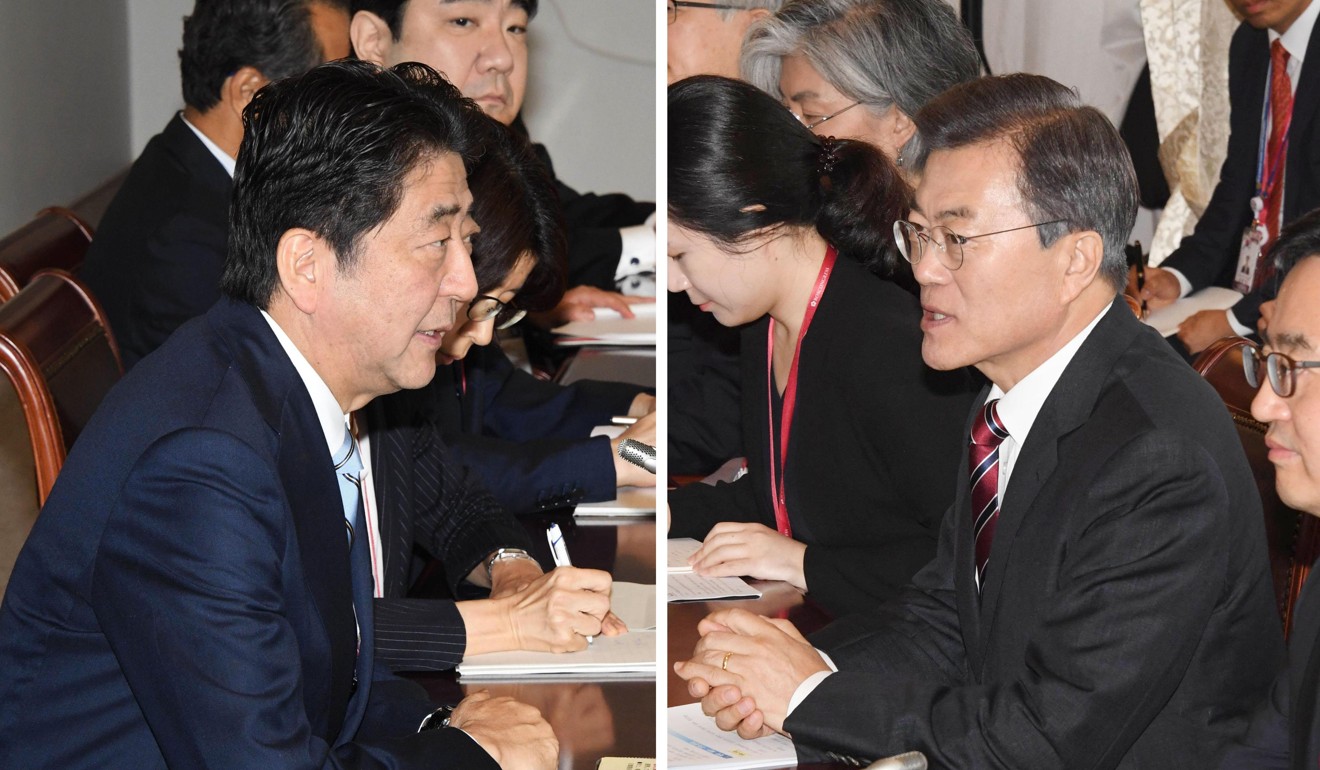South Korea installs four more US THAAD launchers to counter missile threat from North
Beijing objects to deployment in South Korea of an advanced US missile defence system that has a radar that can see deep into Chinese territory

South Korea and the United States on Thursday completed the deployment of a US missile defence system to counter North Korean threats, sparking demonstrations by residents and a diplomatic protest from Beijing.
South Korea had said already that Pyongyang may be gearing up for another rocket test in the aftermath of its nuclear detonation on Sunday, as it seeks to improve the capacity of its intercontinental ballistic missile programme.
Prime Minister Lee Nak-yon said at a conference in Seoul that North Korea may launch its next missile on Saturday – the anniversary of its founding – adding there wasn’t much time until the regime became a fully nuclear-armed state.
South Korea has said the launchers for the US missile defence system known as THAAD would be installed in the face of the growing threat from Pyongyang. The move has already drawn a rebuke from China, which argued THAAD could upset the regional security balance and be used against its own missile systems.
Chinese foreign ministry spokesman Geng Shuang restated China’s opposition on Thursday. He said
that China had complained to the US and South Korea and urged them to “take seriously the security concerns and interests of China and other regional countries.”
The US and South Korea should “immediately stop the deployment process and withdraw relevant equipment,” Geng said.

Earlier this week, a provisional survey into the environmental impact of the THAAD system was completed, paving the way for deployment of the additional launchers at the site, formerly a private golf resort, in North Gyeongsang Province.
Clashes occurred throughout the night Wednesday near the site as some 400 residents of a nearby farming village fought police officers during a protest opposing the deployment.
Police said some 8,000 officers were sent to the area near the deployment site. Dozens of residents and police officers sustained injuries and were taken to nearby hospitals.
Watch: US tests THAAD anti-missile system
South Korean Defence Ministry spokesman Moon Sang-gyun said South Korea was considering holding consultations with “a related country” to ease concerns about the THAAD system, apparently referring to China.
South Korea and the United States, however, insist the system is solely designed to intercept missiles fired from North Korea.
After the announcement by the previous South Korean government last summer that the country would deploy the THAAD system, its relations with China soured to their worst level in many years, with South Korean businesses there allegedly targeted under what Seoul sees as retaliatory measures by Beijing.
Meanwhile, South Korea warned its citizens in China to avoid “friction” and “needless arguments” with Chinese people.
Seoul’s Foreign Ministry spokesman Cho June-hyuck said Thursday that the message posted on the website of the South Korean embassy in Beijing was aimed at protecting the safety of South Koreans in China.
South Korea has previously raised concerns over a reported ban on Chinese tour groups visiting the country in what many saw as Beijing’s retaliation over the THAAD deployment.
There have also been reports in past months about growing calls in China to boycott South Korean products and cancel appearances by South Korean pop singers or movie stars.

The deployment of the missile shield came as Japanese Prime Minister Shinzo Abe and South Korean President Moon Jae-in agreed Thursday to exert stronger pressure on North Korea in the wake of Sunday’s nuclear test by Pyongyang, including by the adoption of tougher UN sanctions.
The leaders, meeting in Vladivostok, Russia, also agreed on coordinating bilaterally and with the United States, their mutual security ally, to call on China and Russia in dealing with threats from North Korea, according to a Japanese official who was at the talks.
The talks on the sidelines of an economic forum come as the UN Security Council, including veto-wielding permanent members China and Russia, is debating a fresh resolution to impose tougher sanctions such as an oil embargo on North Korea to curb its nuclear and missile development programmes.
Agence France-Presse, Bloomberg, Associated Press, Reuters